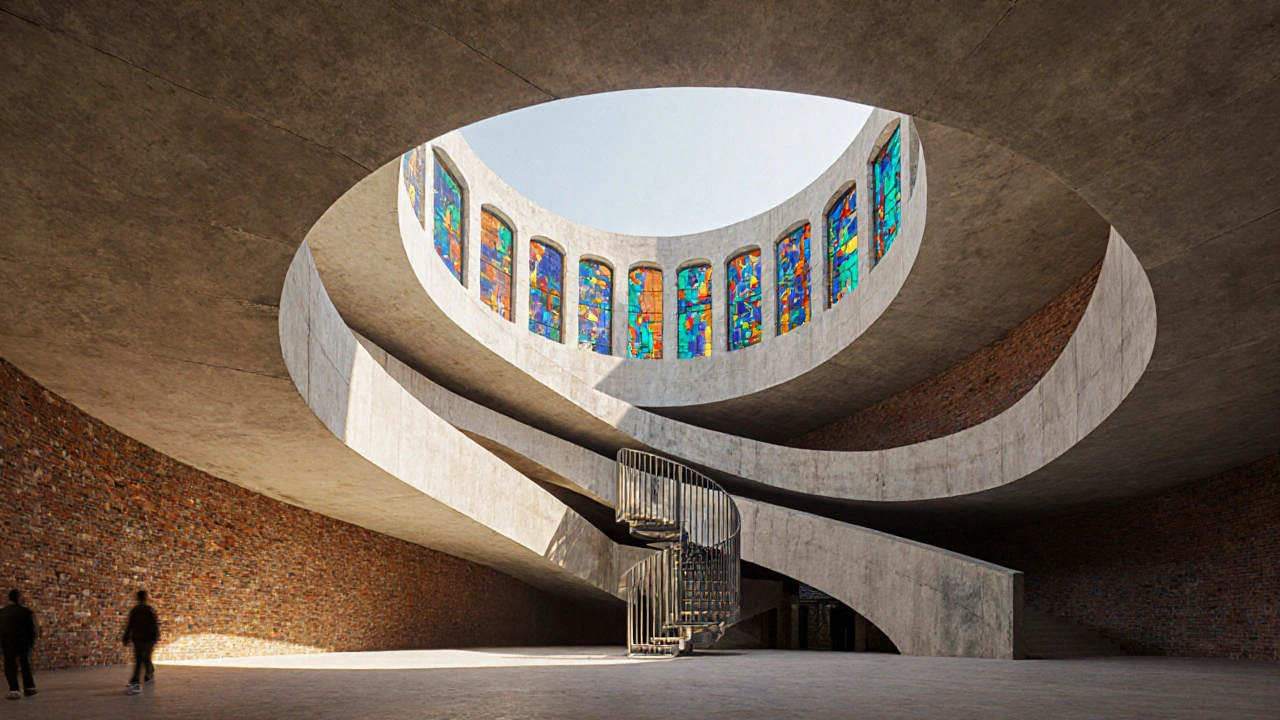Explore how expressionist architecture uses bold forms, materials, and light to create emotional connections, with history, key architects, and practical design tips.
Expressionist Architecture: How to Read Bold, Emotional Buildings
Ever seen a building that looks like it’s moving or feels emotional? That’s expressionist architecture. It grew in the 1910s–1930s as a reaction to strict classicism and boring boxes. Architects wanted buildings that felt alive, dramatic, and sometimes even a little strange.
What to look for
First, shape matters more than rules. Expressionist buildings use curved walls, tilted roofs, and unexpected silhouettes. Second, materials get treated for effect—rough brick, sculpted concrete, colored glass, and tile create texture and mood. Third, the design often carries symbolism: spikes, caves, or wave-like forms aim to stir emotion, not just house people.
Think of Erich Mendelsohn’s Einstein Tower in Potsdam: it looks organic and almost futuristic for its time. Bruno Taut’s Glass Pavilion plays with light and color. In the Netherlands, the Amsterdam School—buildings like Het Schip—uses ornate brickwork and sculptural forms that read as expressionist in spirit.
How to spot one in your city
Walk around with a quick checklist: does the building break symmetry? Are the roofs dramatic or irregular? Do surfaces feel sculpted instead of flat? Look for emotional intent—does the designer want you to react, not just pass through? If yes, you’re likely looking at an expressionist piece.
Photography tip: shoot from low angles to emphasize shape and use shadow to reveal texture. Night shots with side lighting often bring out the dramatic curves and relief work that daytime light flattens.
Want to use expressionist ideas at home or in a small project? You don’t need a full sculptural façade. Start with bold moves: a curved entry wall, an asymmetrical window arrangement, a textured brick or tile accent, or dramatic exterior lighting. These choices give energy without massive cost.
For interiors, choose sculptural fittings—a curved stair, rounded built-in benches, or a statement light fitting. Keep structure practical: expressionism is about feeling, not chaos. Balance bold elements with simple, calming finishes so the space stays liveable.
Preservation and reuse are common today. Many expressionist buildings face repair challenges because of unusual shapes and materials. When renovating, focus on keeping the original lines and materials where possible; that’s usually what gives the building its character.
Curious where to see expressionism? Search for early 20th-century German and Dutch projects, then branch out. Museums, theaters, and housing blocks are good places to start. If you visit one, stand back to take in the silhouette, then step close to study textures and details.
Expressionist architecture is loud in a good way. It asks you to feel, not just look. If you want buildings that surprise and move you, start spotting those bold shapes—once you do, they won’t stop catching your eye.
Well folks, strap on your thinking helmets because we are diving headfirst into the whirlpool of artistic wonder known as Expressionist Architecture. This isn't just another style, oh no, it's the Picasso of designs, revolutionizing the way we look at buildings. Imagine buildings twisting, turning, and shouting "Look at me, I am not a boring block!" It's like watching your favorite action movie but in concrete and glass, folks. So buckle up, we are about to explore the roller coaster ride of design that is Expressionist Architecture. Let's get artsy!


